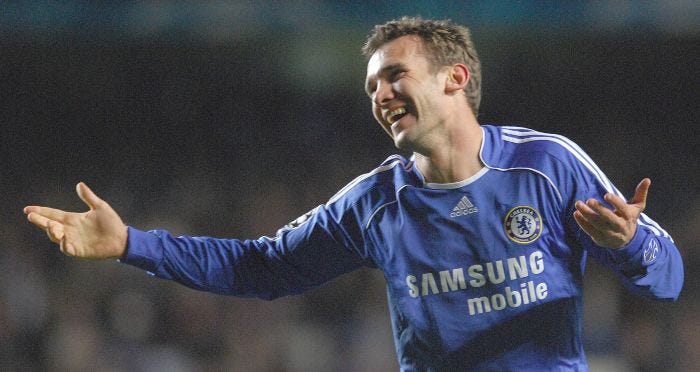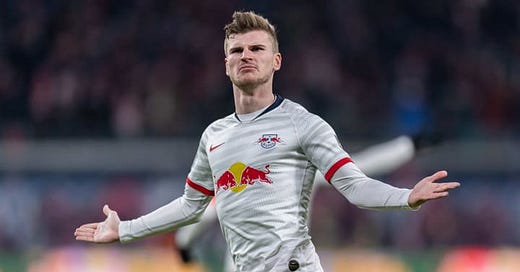No matter the season, no matter the pandemic, no matter just about anything else, transfers are the most intriguing part of draft season. But how do we project how well they’re going to do in Fantasy Football? Or to put it another way, how do we tell a Joelinton from a Bruno Fernandes? A manager that nails this has a real edge over their counterparts when it comes to drafting, trading and roster management. “But football’s chaotic” I hear you say. “How could you be sure?”. Well you can’t. But you can certainly have a good process and put yourselves in with the best chance of succeeding!
The always excellent Drafterthoughts recently published a statistical analysis of players in Europe’s big 5 leagues, to identify a top 200 player list. (Note. For those using the original Togga scoring, you would get slightly different numbers out of you ran the same analysis. But nonetheless, for any league, this is a very useful benchmark. For the purposes of this article, I will be using our slightly out of date Togga scoring for any numbers I discuss - scoring table included at the bottom).

Knowing how a player performed the season before they move in a big transfer is a key piece of information. Timo Werner is a prime example, coming into this season. Those of you that clicked Drafterthought’s article above (and if you didn’t, you really should… go back and click it…) will have noticed that Timo is sat 6th. 6th in all of Europe. Not bad. He’s also a player that I imagine most draft managers are looking to develop a view on ahead of their drafts.

Timo’s 2019/20 season would’ve been worth 750 points in Togga scoring. For context, that would have been enough for the second place finish this year (behind, the quite frankly ridiculous, Kevin De Bruyne). It would’ve also finished him second the year before that, behind Eden Hazard’s 840 point haul.
So should we assume that Timo’s set for a top 3 finish in 2020/21?
Well this is where it gets murky…
Factors to consider
I’m not out to convince you that you shouldn’t be optimistic about young Timo’s chances. Anyone that has been in a draft league with me would recognise that naive optimism is my default setting. Callum Hudson-Odoi rode my bench all year, despite contributing more to Covid-awareness than he ever did to my Fantrax team. And God help me, I’ll probably draft him again.
But when we are talking about the really top level transfers (Timo, Jadon Sancho if he signs, Kai Havertz similar) the price tags are significant. If we assume that Sancho and Havertz both come in as midfielders and land in that fairly shallow pool, we’ve got a situation where it’s possible that three new signings land straight into a top 20 ADP spot.
There’s certainly a piece around draft philosophy that comes in here (do you swing for upside or go after a “safe” top level performer with a high floor?) but the main topics that are worth thinking about are:
Were their points scored last year backed up by good underlying numbers?
What are the differences between the team they’ve left and the team they’re moving to, as well as the difference between the leagues they’re moving between?
Is the player within an age range where we can expect significant changes to their output?
The Underlying numbers test
Aston Villa entered the season with Wesley as their starting striker. When Wesley went down, Villa turned their heads to Ally Samatta, who had just scored 7 goals in 20 league appearances for Genk, in the Belgian first division. The year before that, he had had a 23 goal, 5 assist season for the same team. The issue came when looking below the hood, at the underlying numbers, as this Twitter thread by SmarterScout so clearly displays:


Not too surprising, then, that Villa struggled mightily with putting the ball in the net. A fact that, had Watford not capitulated against West Ham, might’ve relegated them. This is all the more egregious when considering that Jack Grealish alone was credited with 91 chances created. Samatta for all of his effort in the Premier League, was generating 0.18 xG per 90 (and under-performing it). As the SmarterScout thread shows, this wasn’t an unpredictable result.

So looking back at our example player in this sample: what do Timo’s numbers look like under the microscope?
In his 34 games played this season for Leipzig, Timo racked up a non-penalty xG of 20.4 (which he outperformed by 4.6 goals), took 3 penalties (100% conversion rate), made 53 key passes, generating an expected assist value of 9 (which was under-performed by 1). These are excellent numbers. Even accounting for his over-performance on goals, his xFpts only docks him by 40 points which in Togga scoring would’ve left him at 708.25 points.
And his points are pretty well distributed between goalscoring, passing and dribbling:

So Timo looks to pass this test pretty well (as, it should be said, would Kai and Jadon who both have xFpts values in the 500s). Am I ready to crown him as a top 2 player? Well there’s still more to look at…
Changing scenery
Let’s start with the easy one. Not all leagues are the same. At the surface level, we can look at things like goals scored per match and see that there are fundamental differences in what we would expect. The Bundesliga, for example, has had average goal per game returns of 3.2, 3.2 and 2.8 in the last three seasons. The Premier League saw 2.7, 2.8 and 2.7 in that time. So to go back to the man of the moment, we have to be aware that Timo is moving from a league that saw almost 0.3 goals per game more than the league he is coming into. Probably not enough to dock him significantly, but something to be aware of nonetheless.
This is also a factor when a player moves from a league with a lower standard of opposition, though don’t always assume a binary outcome. The Eredivisie is often talked of in fairly demeaning terms by seasoned Premier League watchers. But remember that just because the league produced Mateja Kezman and Afonso Alves, it doesn’t mean it didn’t also produce the Brazilian Ronaldo, Ruud van Nistelrooy and Robin van Persie. With players moving from these leagues (see Ziyech, Hakim) we should probably do two things:
Look at how they performed in competitions like the Champions League / Europa League, where that data exists
Adjust our range of outcomes to be slightly wider than we might otherwise have put them
Hakim helpfully has Champions League data available to us, where we see he still had excellent shot-creating action numbers, 2.2 key passes per 90 and a very respectable 0.62 xG+xA per 90. There’s a lot to like there. But the sample size is smaller, so managers should price him accordingly in case he struggles with league adaptation.

Shifting from league level adjustments to team level is a very relevant (and more difficult) thing to forecast.
There are real cautionary tales where players move to clubs with different styles and struggle to replicate performance. Examples include Michy Batshuayi, who followed up an excellent half-season loan with attacking Dortmund (7 goals and 0.69 xG + xA per 90) by moving to a not-so-attacking Crystal Palace, where, despite a respectable enough goal return, he couldn’t rebottle that magic.
Returning to our specific example again, Chelsea and Leipzig actually performed very similarly on xG overall with Chelsea sitting at 66.6 xG and Leipzig at 70.7 (though Leipzig scored far more than their xG). But the distribution of the goals within the team looks quite different. The highest % contributor to Chelsea’s goals this season was Tammy Abraham with a respectable 22%. Even if you include Olivier Giroud in the mix, you only add another 12% to that. Or to look at that another way, Frank Lampard’s centre forward contributed 34% of Chelsea’s goal total last year.
Timo’s goal tally alone would represent 41% of Chelsea’s total goals scored (he was worth 34% of Leipzig’s larger tally, interestingly). So what do we do with this information? There’s a lot of noise in this. Could it be that Leipzig overperformed their xG by so much precisely because they had Timo Werner? Or is it to do with their style of play? Or is it just a one-off? Either way, it’s relevant to the outcome to think about whether that same goal level is achievable in teams that play in a different way and that spread the goals around the team.
So two tests in and so far the man from Stuttgart is coming out pretty well.
The age curve
I’m going to open by saying that the evidence suggests that age curves are pretty badly estimated by most fans. But this is an area that it seems a lot of progress is happening in, quite quickly (see interesting article below):
For Fantrax, we can probably be quite blunt in how we look at players. If they’re under a certain age threshold, particularly for forwards, we can anticipate there is a higher likelihood that there will be an increase in both minutes played and statistical output from the previous season (this is of particular interest when trying to assess young players who have just had “breakout seasons” - looking at you Mason Greenwood). And similarly, as we get to the later years, we can anticipate that anyone not named Jamie Vardy (who seems to still be improving year on year despite any logic or reason) might start to decline in terms of the output we’re seeing (whether due to reducing minutes or just due to their stats starting to drop off as age catches them).
This is also true of new signings. When Andriy Shevchenko moved to the Premier League, it was exciting. But he was 29, going on 30. Whilst you probably wouldn’t have predicted him to drop off the way he did, it would have been sensible to assume that whatever statistical output we were seeing at Milan, we wouldn’t expect a transition to a new league, team and country to lead to an increase on that performance.

What is very exciting about most of this year’s potential signings is that they mostly fall into a very appealing section of the age curve. Timo is 24, which is increasingly accepted as early peak years for a striker. Jadon Sancho would be 20. Kai Havertz 21. So there is a possibility that anything we lose from the transition of league / team, might be recovered just from natural progression.
“So,” you’re thinking “I’ve just read a really long article, just to find out that three transfer stars are good?”. And yes, to some degree, you have. But what I hope is clear, is that there are some really clear factors that we can use to assess attacking signings (even those not quite as blockbuster as the three listed here) and a good manager is aware of these factors and uses them to adjust their confidence ranges for players accordingly.
If you’re going to draft a Werner high, it’s not a bad decision. His ceiling is up there with the top scoring players in the last few years. Perhaps consider pairing him with a safer player in round 2. Or if you’re really swinging for the fences and go for Werner round 1, Sancho round 2, then plan a safer draft from that point onwards to make sure that you’ve got the right insurance behind them.
League scoring settings for anyone that is wondering how on earth the numbers were reached…





This is great stuff! Appreciate the analysis